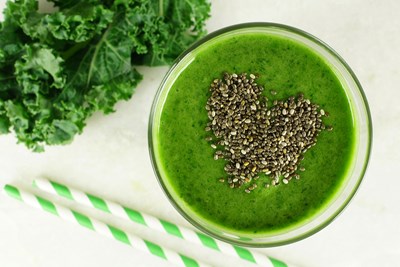Becoming a vegan isn’t for the faint of heart. Completely eliminating all animal byproducts from your diet can do wonders for your health, but it will take a lot of commitment on your part to stick to your vegan diet plan in your everyday life. What if your friends want to go to dinner at that new Italian place around the corner that specializes in seafood pastas? Or, what if you want to make a chocolate cake for your three year old’s birthday party that you can enjoy too? What are you going to do? Once you get the hang of being a vegan, cooking vegan foods, reading ingredient labels, and going out to eat will be second nature, but at first it will likely be a challenge. Here’s what a vegan diet plan actually looks like, so you will be prepared when you make the switch to veganism.
The food limitations are harder than you think.
The first rule of veganism is that you cannot consume any product that comes from an animal. A lot of these products are obvious: meat, eggs, and dairy products. Yet, some of these products aren’t so obvious. You have to take a lot of care to not consume animal products when you are at the grocery store or at restaurants because those ingredients are hidden in many packaged and prepared foods. For example, did you know that you can’t eat marshmallows? Marshmallows contain gelatin, which is made from the bones, ligaments, and skin of cows and pigs. Anything that contains gelatin is off-limits, including jell-o, altoids, jams, gummy bears, and more. Do your research because you never know what could contain animal products.
For any food that does contain animal byproducts, you can either eliminate them from your diet completely or you can find alternatives. Instead of dairy products, you can use soy or almond alternatives, you can substitute tofu or mushrooms for a meat dish, and applesauce or mashed banana instead of eggs. (Then you can make a vegan cake recipe that both you and your toddler will love!) Another option is to find a company that makes a vegan-friendly version of your favorite foods, like marshmallows, if you’re really craving a s’more.
You have to double check your vitamin and nutrient consumption.
One aspect of veganism that you need to pay close attention to is ensuring that you are getting the right amount of nutrients in your diet. Protein is the nutrient that people worry about most, but that worry is actually a bit overhyped because most vegan diets consist of an abundance of beans, which provide more than enough protein. The nutrients you need to concern yourself with are: vitamin B12, calcium, iron, and zinc. Vitamin B12 is only naturally found in animal products, so you will need to consume fortified cereals or fortified soy milk and/or take a daily supplement so you do not develop a B12 deficiency. To keep up your calcium and iron intake, eat plenty of spinach, tofu, figs, broccoli, potatoes, flax seeds, and peanuts as part of your diet plan.
You have to plan ahead of going out to eat.
Being a vegan means that you have to change the way you think about food. Gone are the days when you can walk into a restaurant and order anything you want off the menu. This doesn’t mean that you are going to miss out on delicious foods, but you will have to do a bit of homework before you put anything in your body. The majority of restaurants, even ones that are not chains, now have their menus and nutritional facts online, so you can look up dishes beforehand to determine what is safe for you to eat.
You have to read food labels closely.
When it comes to grocery shopping, it will likely be beneficial for you to find a health foods grocery store, or at least a store that has a health foods section. These items will be labeled if they are “vegan friendly,” which will save you a lot of time that you would have otherwise spent reading ingredient labels. Sometimes that isn’t really avoidable, unfortunately. In those instances, look out for cholesterol, “natural flavors,” vitamin D3 and gelatin, and if you don’t recognize something, look it up. Knowing exactly what you are eating will take considerably more effort than if you stuck to a regular diet plan, but it will pay off in the end because you can have peace of mind knowing that you are doing everything you can to keep yourself in good health.



